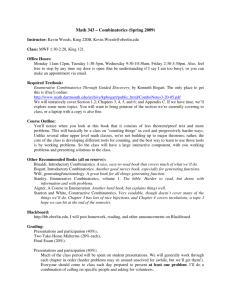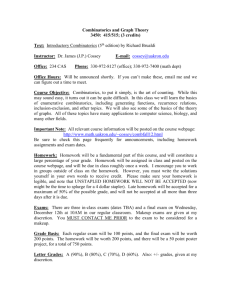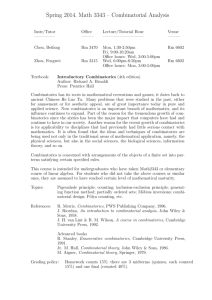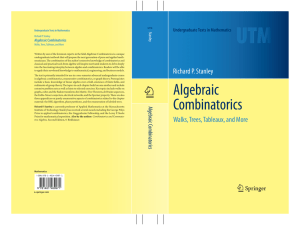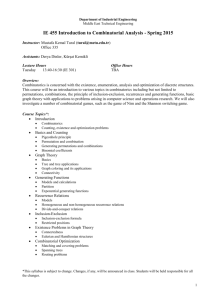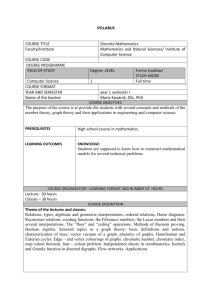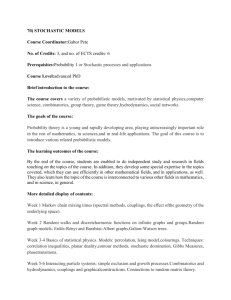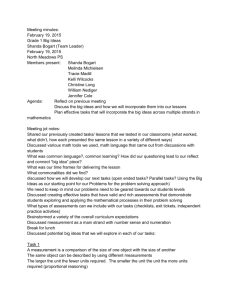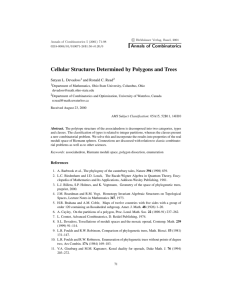Math 172 – Combinatorics Syllabus (Fall 2005) Instructor: Kevin
advertisement
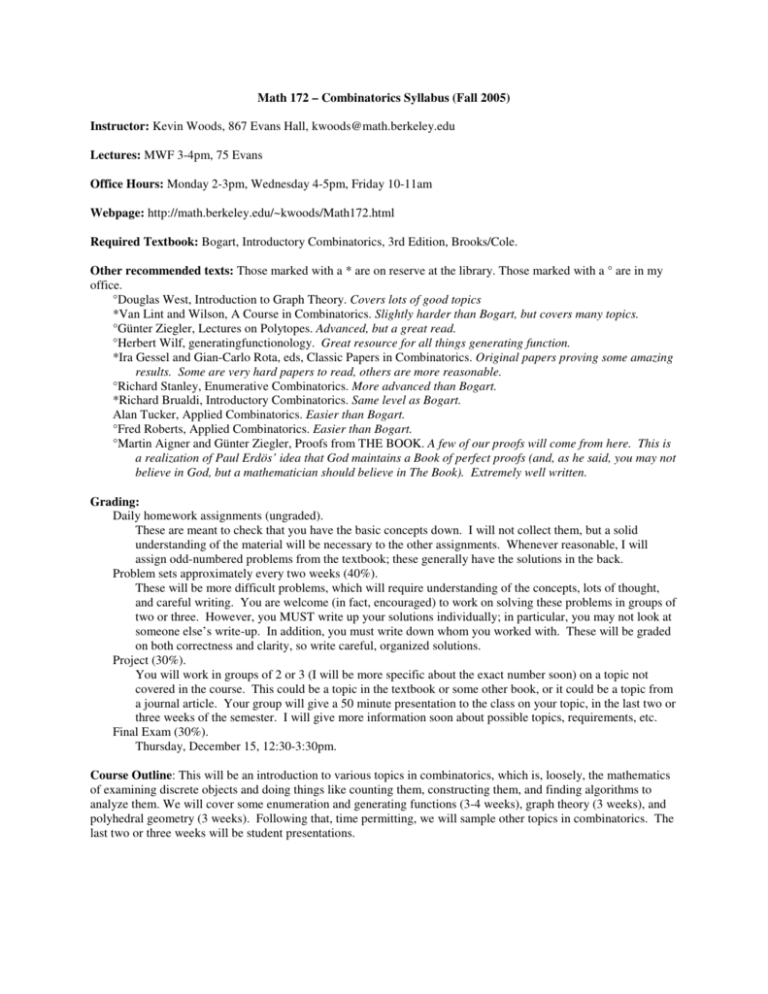
Math 172 – Combinatorics Syllabus (Fall 2005) Instructor: Kevin Woods, 867 Evans Hall, kwoods@math.berkeley.edu Lectures: MWF 3-4pm, 75 Evans Office Hours: Monday 2-3pm, Wednesday 4-5pm, Friday 10-11am Webpage: http://math.berkeley.edu/~kwoods/Math172.html Required Textbook: Bogart, Introductory Combinatorics, 3rd Edition, Brooks/Cole. Other recommended texts: Those marked with a * are on reserve at the library. Those marked with a ° are in my office. °Douglas West, Introduction to Graph Theory. Covers lots of good topics *Van Lint and Wilson, A Course in Combinatorics. Slightly harder than Bogart, but covers many topics. °Günter Ziegler, Lectures on Polytopes. Advanced, but a great read. °Herbert Wilf, generatingfunctionology. Great resource for all things generating function. *Ira Gessel and Gian-Carlo Rota, eds, Classic Papers in Combinatorics. Original papers proving some amazing results. Some are very hard papers to read, others are more reasonable. °Richard Stanley, Enumerative Combinatorics. More advanced than Bogart. *Richard Brualdi, Introductory Combinatorics. Same level as Bogart. Alan Tucker, Applied Combinatorics. Easier than Bogart. °Fred Roberts, Applied Combinatorics. Easier than Bogart. °Martin Aigner and Günter Ziegler, Proofs from THE BOOK. A few of our proofs will come from here. This is a realization of Paul Erdös’ idea that God maintains a Book of perfect proofs (and, as he said, you may not believe in God, but a mathematician should believe in The Book). Extremely well written. Grading: Daily homework assignments (ungraded). These are meant to check that you have the basic concepts down. I will not collect them, but a solid understanding of the material will be necessary to the other assignments. Whenever reasonable, I will assign odd-numbered problems from the textbook; these generally have the solutions in the back. Problem sets approximately every two weeks (40%). These will be more difficult problems, which will require understanding of the concepts, lots of thought, and careful writing. You are welcome (in fact, encouraged) to work on solving these problems in groups of two or three. However, you MUST write up your solutions individually; in particular, you may not look at someone else’s write-up. In addition, you must write down whom you worked with. These will be graded on both correctness and clarity, so write careful, organized solutions. Project (30%). You will work in groups of 2 or 3 (I will be more specific about the exact number soon) on a topic not covered in the course. This could be a topic in the textbook or some other book, or it could be a topic from a journal article. Your group will give a 50 minute presentation to the class on your topic, in the last two or three weeks of the semester. I will give more information soon about possible topics, requirements, etc. Final Exam (30%). Thursday, December 15, 12:30-3:30pm. Course Outline: This will be an introduction to various topics in combinatorics, which is, loosely, the mathematics of examining discrete objects and doing things like counting them, constructing them, and finding algorithms to analyze them. We will cover some enumeration and generating functions (3-4 weeks), graph theory (3 weeks), and polyhedral geometry (3 weeks). Following that, time permitting, we will sample other topics in combinatorics. The last two or three weeks will be student presentations.
